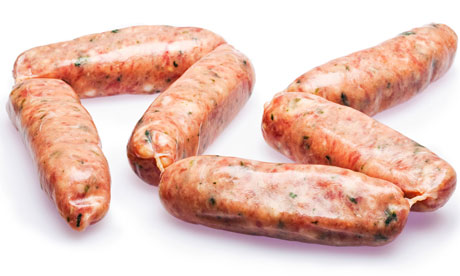
The problem
You reach for the chicken in the fridge, but the use-by date was two days ago. You don't want to waste it and it looks and smells OK, so surely it is safe to cook. Or is it?
There are more than one million cases of food poisoning each year in the UK and 20,000 hospitalisations. The Food Standards Agency (FSA) warned last week that more of us are risking food poisoning by eating food that is past its use-by date. It also said it was OK to eat food after its "best before" date. So what is the difference and how can you know if tonight's supper is going to bite back later?
The solution
Use-by dates are applied to foods that may make you ill because harmful bacteria can multiply in them. They are used for perishables, including meat, fish and dairy products. Other foods, such as biscuits or pasta, may have best-before dates: these indicate a reduction in quality over time, not how safe the food is. Display-until or sell-by dates are an indication for shop staff to rotate products on the shelves.
It is hard to know the real risk of eating food past its use-by date. If it was contaminated (for example by animal faeces) before it was packaged, left unrefrigerated in a store, or brought home on a long, hot car journey, there is a good chance harmful bacteria could have multiplied anyway. Manufacturers decide the use-by date after stringent testing and will err on the side of caution as food poisoning is bad for business. In reality, food poisoning is more likely to be a result of poor preparation or cooking. Tracing it to a use-by date that has been ignored is hard, as people don't keep the microbiological evidence of food remnants.
The main causes of food poisoning are campylobacter (found in poultry), listeria (in pate, soft cheese and cooked meats), salmonella, clostridium and E coli. Use-by dates are most informative for assessing the risk of the first three bacteria as they multiply in perishable food over time – the other two cause poisoning by having already contaminated the food. The FSA says two-thirds of fresh chickens in stores have campylobacter on them. However, the bacteria are killed if the bird is cooked properly.
Eyeballing or sniffing food is not a reliable way to assess its safety. Spoilage bacteria, which cause a deterioration in smell or appearance, are different from those that make you sick. You could eat food spoilt by these microorganisms and feel fine. Equally, a hamburger teeming with E coli might smell great.
To avoid food poisoning, shop carefully and freeze anything you won't eat by its use-by date (you can still freeze it on that day). Since food poisoning can be lethal, don't serve food that is past its use-by date to a child or elderly person. However, food poisoning is not pleasant for anyone and is best avoided by being careful about how you store, prepare, and cook your food, as well as when you eat it.

